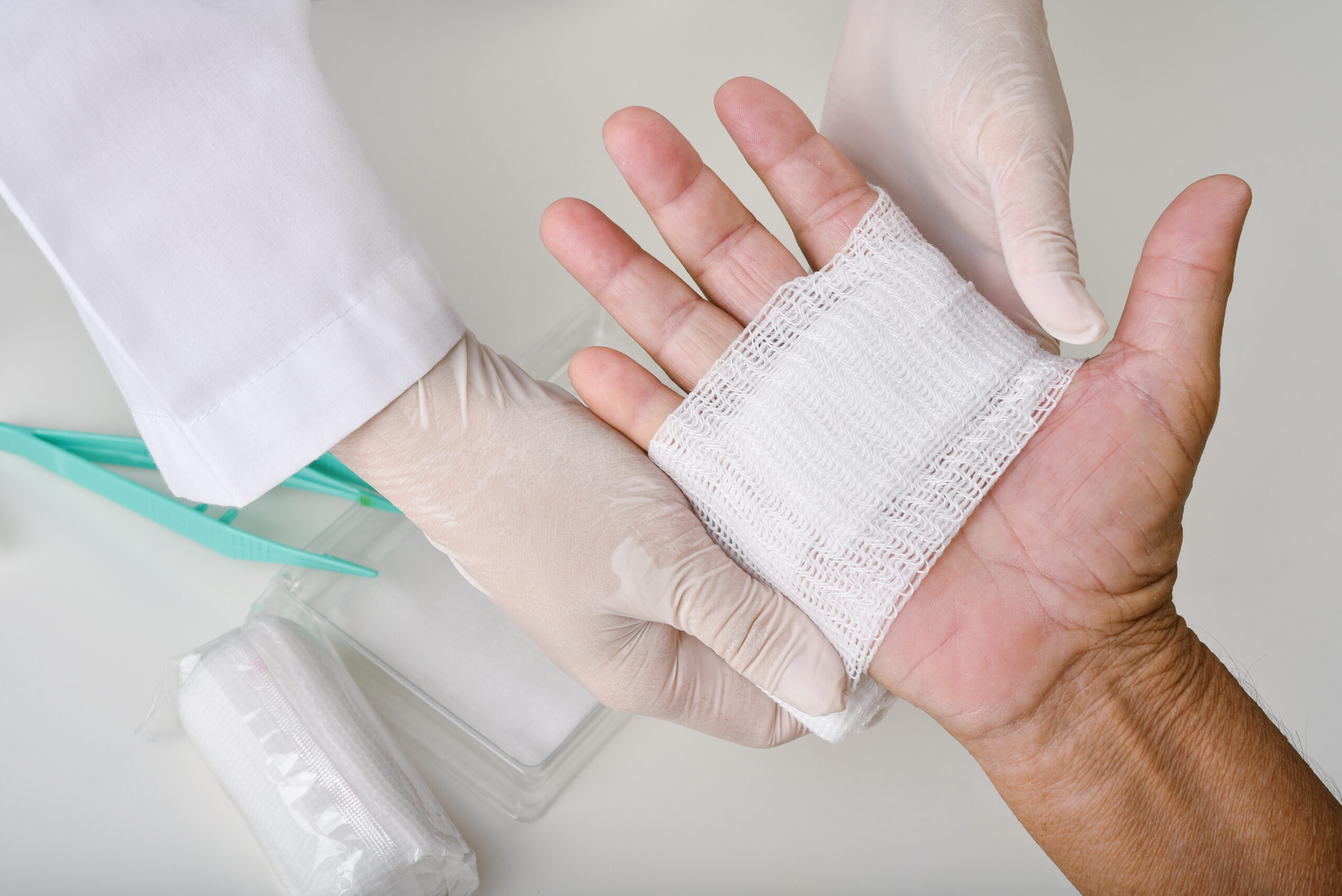Wounds can be a source of pain and discomfort for many people, and the associated wound healing is an incredibly complicated process that needs the appropriate environment in order to achieve success. Of course, different types of wounds require different treatments, but with the recent advancements in medical technology and research being made across the globe, there are products that can now be applied for most skin lesions.
In this article, Team Medical Supplies explores some of the existing wound dressing options available with modern methods to see how well they assist with healing, alongside some future advancements in the technology we use today.
Our Skin & the Wound Healing Process
The skin is the largest organ on the body, and is in charge of a range of critical functions, including regulating body temperature, aiding the immune system, and is a dominant force in most sensory processes. Many would also argue that the skin is the most vulnerable organ to damage as it is also our ‘protective’ barrier against external threats, such as microbial invasion and UV radiation. This protection is done by three layers of skin, being the epidermis, dermis and then hypodermis, and to ensure ongoing protection, each layer of the skin is highly adept at self-renewable regeneration, which is incredibly important once a wound is incurred.
While we might each have our own interpretations of ‘wound’, a scientifically agreed upon definition is simply a disintegration of the skin’s ability to perform the defensive functions mentioned above. These can either be acute (caused by unexpected injury with healing periods typically between 8 to 12 weeks), or chronic (typically caused by burns, ulcers and other conditions without a designated healing period).
Wound healing is an intricate process that can be seen in three stages: inflammation, proliferation and maturation. Different parts of our body are involved in a complex interaction to repair damaged tissue while regenerating lost ones, with varying degrees of severity based on the thickness and intensity of the wound itself.
Wound Dressing
As mentioned above, the particular type of dressing applied will depend on the wound itself. Medical practitioners must be careful to also create manageable, practical solutions to promote their patients’ adoption of the treatment. Wound dressings promote faster, more effective healing by maintaining the appropriate amount of moisture present within a wound, and keep out harmful foreign elements, such as bacteria, so the necessary collagen synthesis, re-epithelialization, and other key healing factors can occur uninterrupted. Self-adherent bandages offer even further protection of wounds as they are able to stick to themselves, rather than the patient’s skin, leaving less pain or comprise during movement.
The Future of Wound Care & Dressings
There is a selection of exciting new advancements in the world of wound dressing. For example, collagen dressings are proving to be an effective way to heal wounds at a more rapid pace. Acute wounds experience an accelerated growth rate in tissues once adjusted by the chemical mediators causing extracellular synthesis, providing a rudimentary scaffolding that allows granulation tissues to create channels, promote maturation, and eventual wound closure.
Alginate dressings are also becoming a well-used method for keeping wounds clean and dry. Produced primarily in the forms of foam, once applied they conform to a cavity wound, to pack the available area with the gel, absorbing exudates quickly to prevent any secretions interfering with the bandage itself, as well as lowering bacterial infections.
Problems we experience today will still continue, however, namely in creating a universally applied dressing for all wound types. The difficulty exists in all wounds, exudates and treating environments differing, meaning composite dressings are likely to be the solution, as they can work to attend to most aspects of common wound healing methods.
Speak with Our Team Today to Learn More
If you would like to learn more about the various methods of wound care available, please feel encouraged to contact our friendly team at Team Medical Supplies today. You can call us on 1300 22 44 50, or leave your details on our simple online enquiry form.

